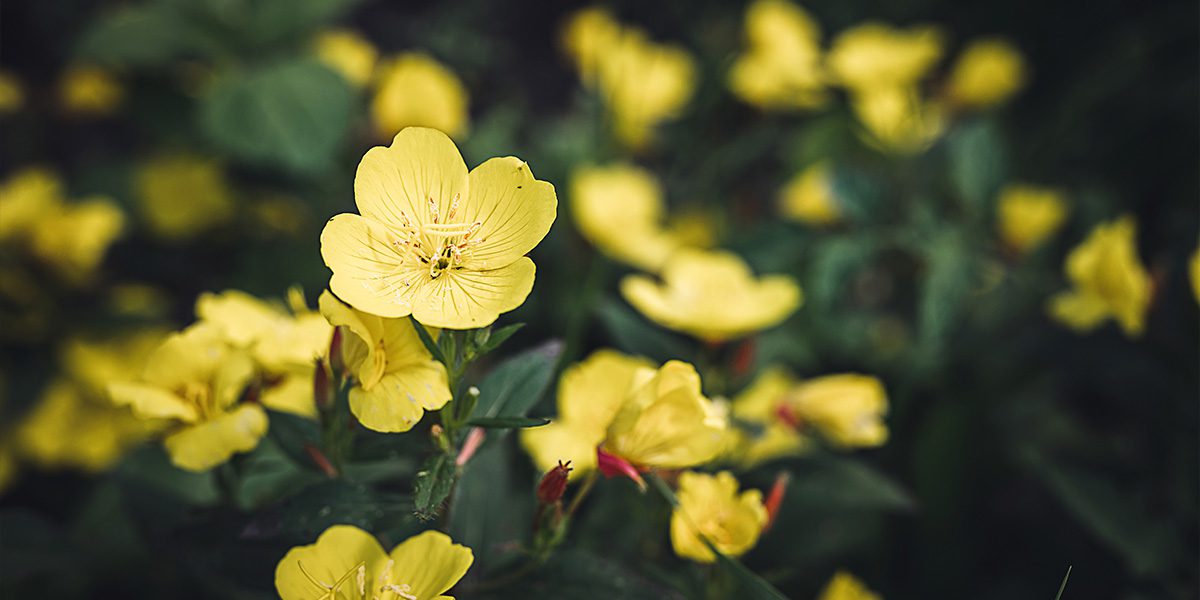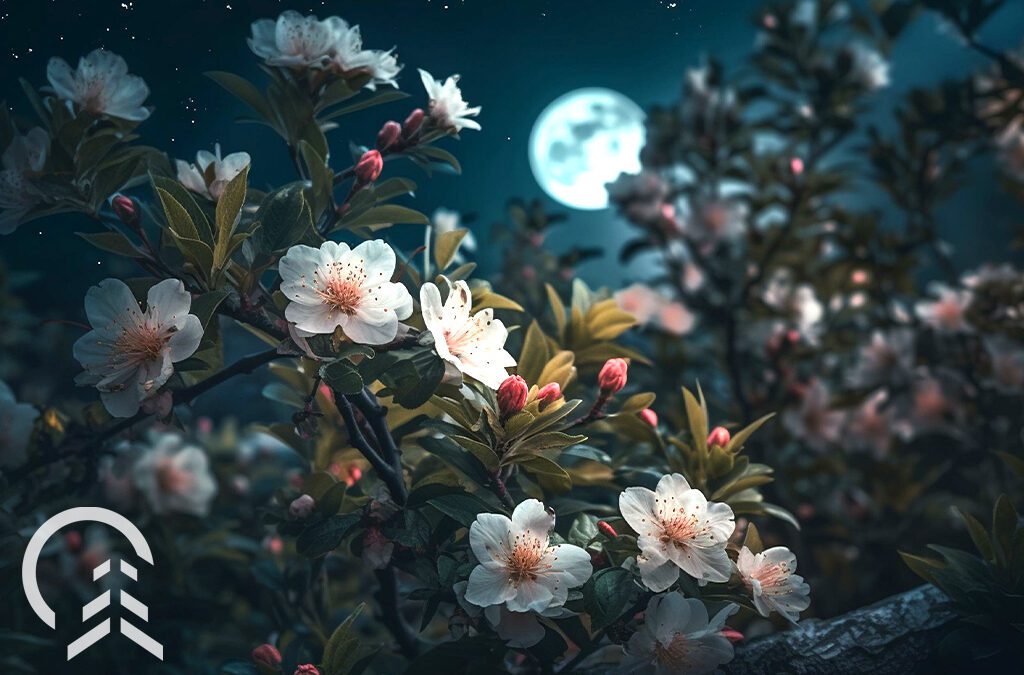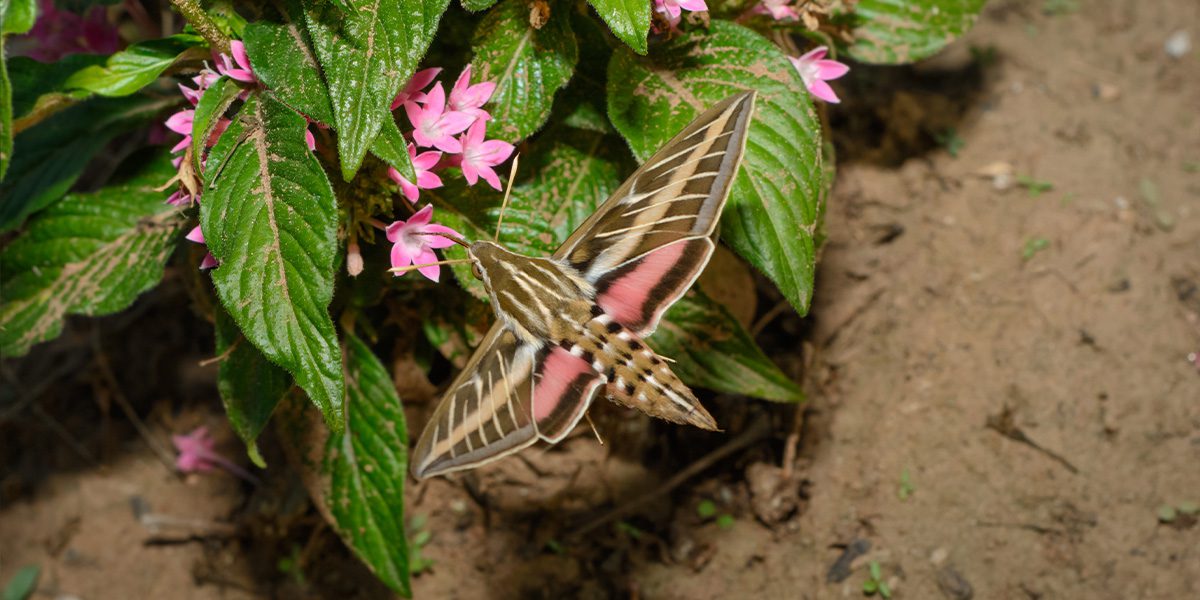A sunny afternoon isn’t the only time you can enjoy your garden. Underneath the light of the moon, a whole other kind of magic opens up: nocturnal flowers awaken, moths visit blossoms, leaves shine in the silver light, and an owl calls from a distance. While you may not have thought much about what your garden looks like at night, it’s possible to cultivate a special kind of beauty that’s best enjoyed beneath the moon. Here’s how!
What Makes a Moon Garden?
If you’ve ever spent a night camping in the forest, you know how nighttime opens up a whole other natural world. Fireflies flash in the meadow, bats hunt over the lake, and even a flowing creek seems to speak a different language. Well, you may be surprised to learn that something similar happens in your garden while you sleep. When you intentionally cultivate a nighttime garden for yourself or the nocturnal pollinators to enjoy, you create a moon garden.
How to Create a Moon Garden in Illinois
As a relatively new and unexplored practice, there are no hard and fast rules for creating a moon garden, and the entire process is open to experimentation and discovery. However, here are a few suggestions to help you create an alluring and creative nighttime ambiance in your garden:
- Grow Plants with Silver Leaves: Silver leaves have a way of capturing the moonlight and standing out in the dark. Try cultivating plants like artemisia, dusty miller, and lamb’s ear to create a moonlit ambiance full of shimmering silver foliage.
- Use White Blossoms: Beneath the glow of stars, white flowers also capture light and stand out in your garden against the black backdrop of the night. Consider growing shrubs with white flowers—like mock orange, Japanese lilac, hydrangea, white azaleas, white roses, or bridal wreath spirea—or white flowers like sweet alyssum, yarrow, white lobelia, and garden phlox.

- Grow Nocturnal Flowers: Some rare flowers only open at night, offering their fragrance and nectar to nocturnal pollinators and anyone else who is awake to enjoy them. Evening primroses are common night-flowering plants, which also happen to have many native species in Illinois. The night-flowering jasmine is another excellent choice, although it can only be grown as an annual in our climate.
- Cultivate Fragrant Blossoms: When the darkness limits our eyesight, our sense of smell strengthens. As a result, fragrant flowers like peonies, lilacs, mock oranges, roses, viburnums, and honeysuckles stand out under the moon and create a pleasant nighttime ambiance in your garden.
- Dim the Lights: You’d be surprised at how bright the moon and the stars are at night if we let our eyes adjust to the dark. These celestial bodies are often enough to light our moon garden and provide a magical quality that artificial light simply can’t duplicate. What’s more, outdoor lights overpower and block out the stars and night sky. If necessary, you can use small solar garden lights, but it’s best to turn off all your lights completely and let the moonlight shine in.
- Explore Your Garden at Night: If you want to know what’s possible in a moon garden, visit your garden in the late evening and early night and take a few notes. Observe the prominent flowers, inhale the fragrances, note any night pollinators you see, and go for a walk around your neighborhood to see what else stands out beneath the moon.
Which Nocturnal Pollinators Visit a Moon Garden?
Besides the bees, hummingbirds, and butterflies that frequent our gardens during the day, there is a whole other cast of creatures that visit us at night. Although more mysterious and unknown, these nocturnal pollinators are just as important to our local ecosystems as the daytime ones, and include fireflies, bats, and thousands of species of moths.
How Do I Cultivate Night Pollinator Habitats in My Illinois Garden?
Moths, fireflies, and other nighttime pollinators need darkness to mate, see each other, and go about their life. Moths easily get confused and trapped in the glow of artificial lights, and our street and porch lights can actually kill thousands of moths every night, so simply turning off your lights goes a long way to protecting nighttime pollinators.
Besides that, the same gardening practices for fostering day pollinators apply to night ones. For example, cultivate blooms throughout the whole season, grow a variety of flower types, let a corner of your yard go wild, and do insect-wise spring and fall clean-ups.
New Possibilities Beneath the Moon
Most of us daytime dwellers haven’t explored the night much, or even imagined that it offered something to explore in the first place. However, if you’re willing to step into the darkness, a whole new moonlit and star-filled world appears, one that’s alive with mysterious insects and filled with the delicate scent of flowers in the cool nighttime air. Even better, this magical world is living quietly right in our backyards!
For more tips and inspiration for cultivating your moon garden, please visit us at our garden centers in Bloomingdale and Carpentersville!
Platt Hill Nursery is Chicago’s premier garden center and nursery.



